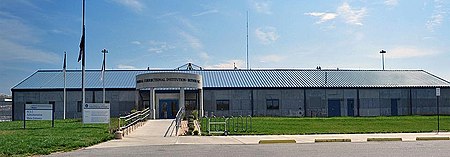Federal Correctional Complex, Butner

The Federal Correctional Complex, Butner (FCC Butner) is a United States federal prison complex for men near Butner, North Carolina. It is operated by the Federal Bureau of Prisons, a division of the United States Department of Justice. FCC Butner is about 25 miles (40 km) northwest of Raleigh, the state capital. It includes the Bureau's largest medical complex, which operates a drug treatment program and specializes in oncology and behavioral science. Among its inmates was Bernie Madoff, who was convicted for perpetrating the largest Ponzi scheme in history. He died at the prison in April 2021.The complex consists of four facilities: Federal Correctional Institution, Butner Low (FCI Butner Low): a low-security facility, opened in 1995. Federal Correctional Institution, Butner Medium I (FCI Butner Medium I): a medium-security facility, opened in 1976 Federal Correctional Institution, Butner Medium II (FCI Butner Medium II): a medium-security facility, opened in 2006 Federal Medical Center, Butner (FMC Butner): a facility which houses inmates of all security levels with health issues, opened in 1995.The complex lies in an unincorporated area on the county line between Durham County to the west and Granville County to the east. On the Durham County side, the portion of the prison is in Mangum Township, while on the Granville County side it is in Dutchville Township.
Excerpt from the Wikipedia article Federal Correctional Complex, Butner (License: CC BY-SA 3.0, Authors, Images).Federal Correctional Complex, Butner
Old Oxford Road,
Geographical coordinates (GPS) Address External links Nearby Places Show on map
Geographical coordinates (GPS)
| Latitude | Longitude |
|---|---|
| N 36.13944 ° | E -78.80442 ° |
Address
Federal Correctional Complex, Butner
Old Oxford Road 7799
27509
North Carolina, United States
Open on Google Maps




